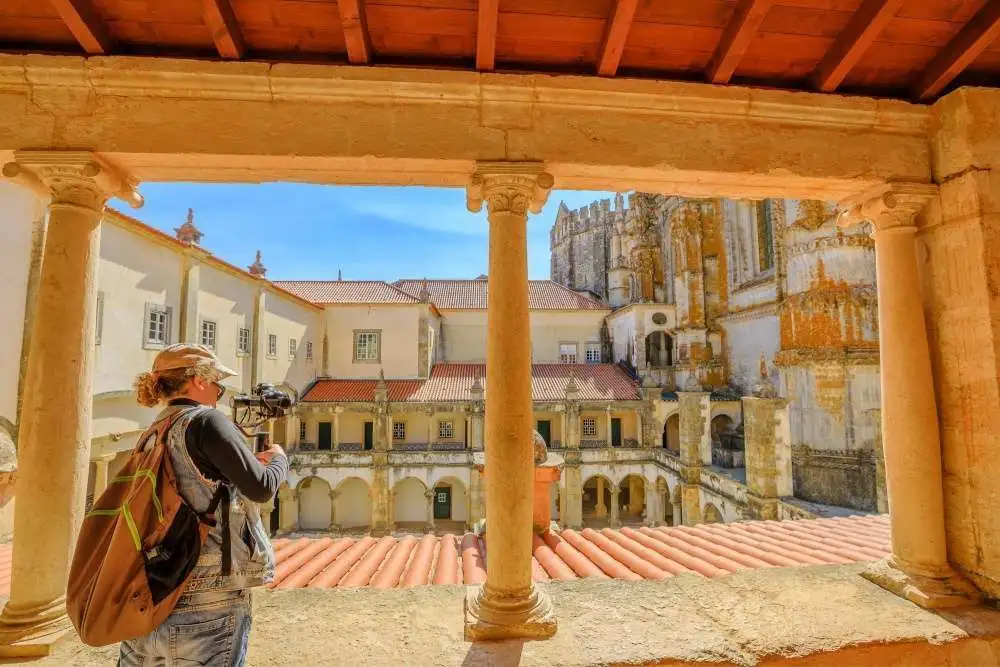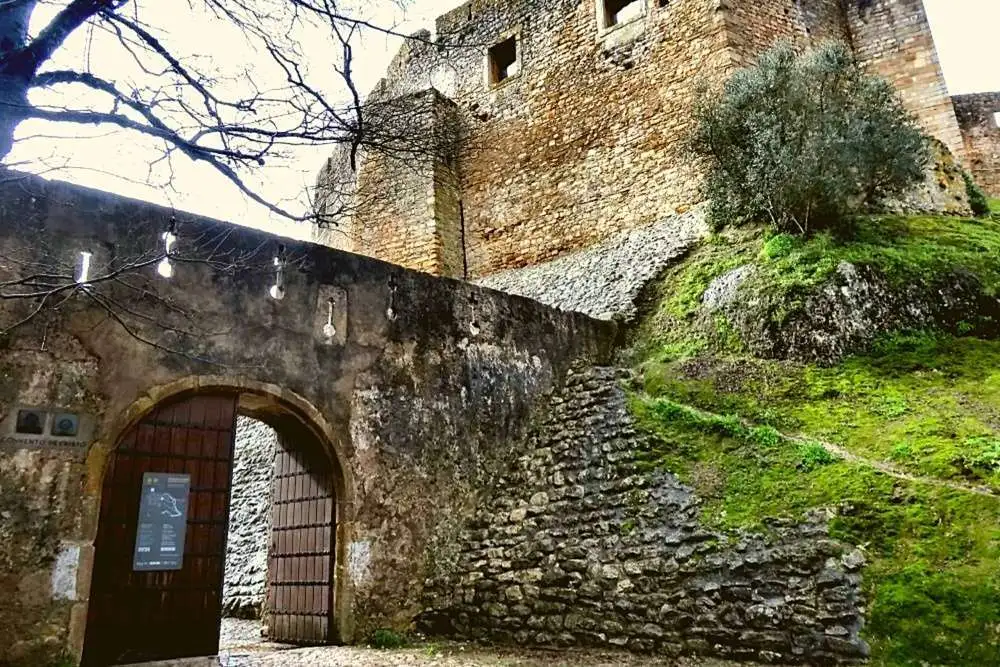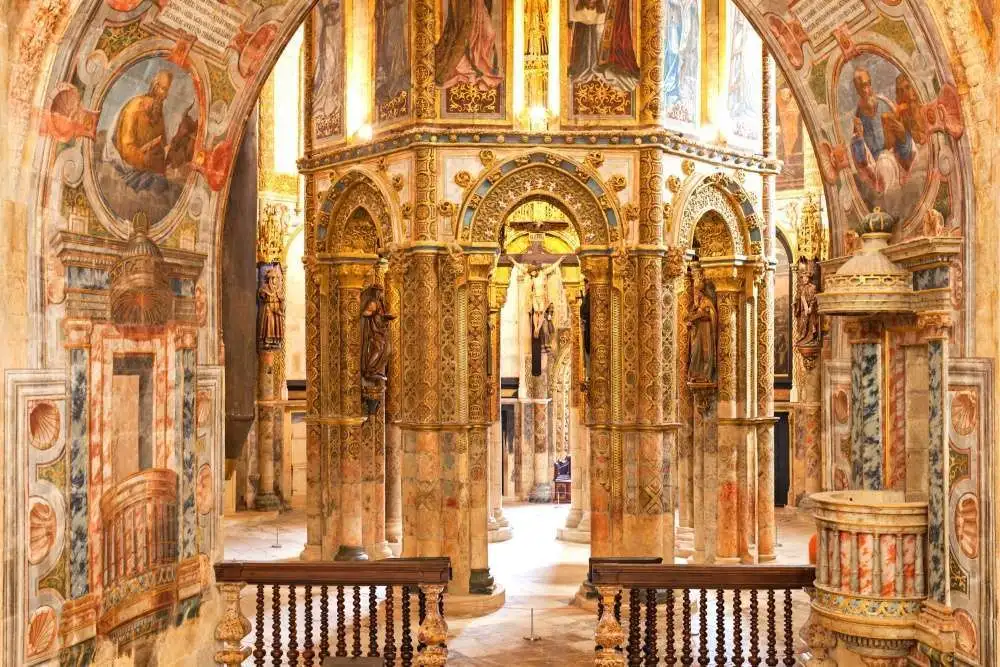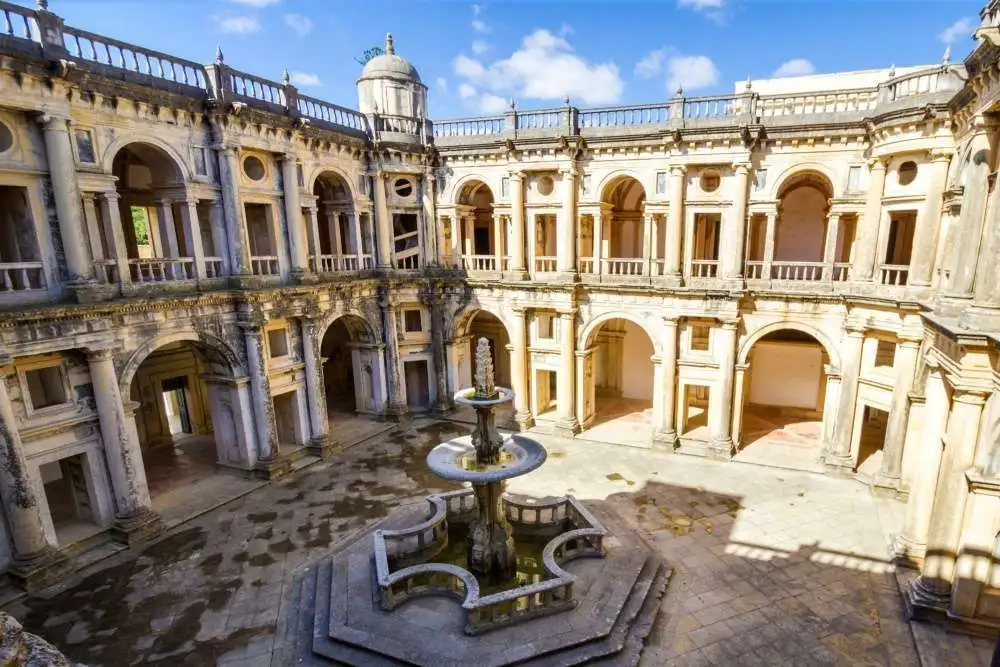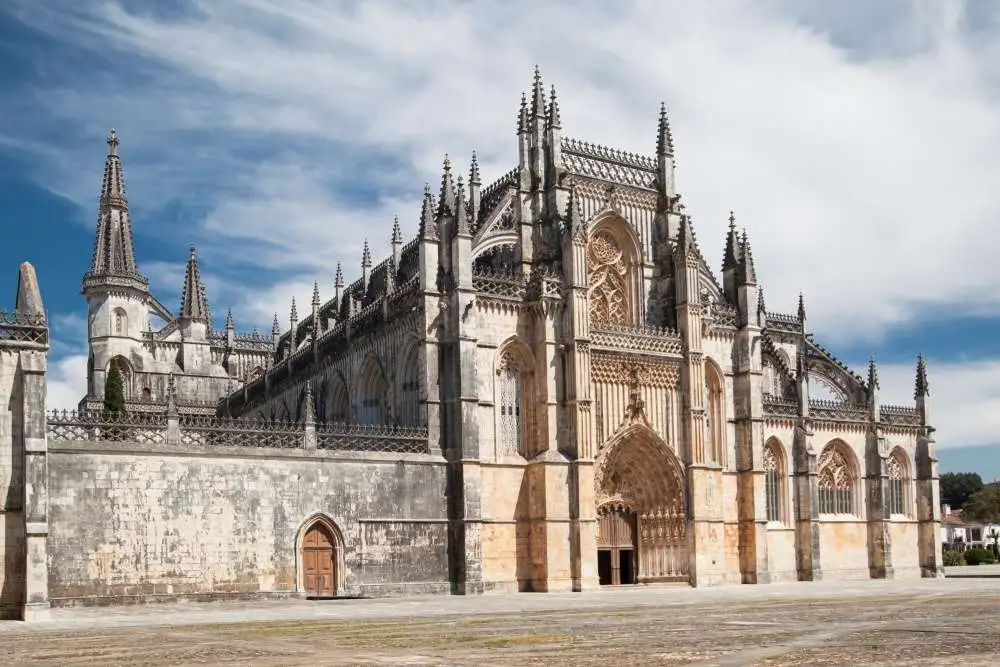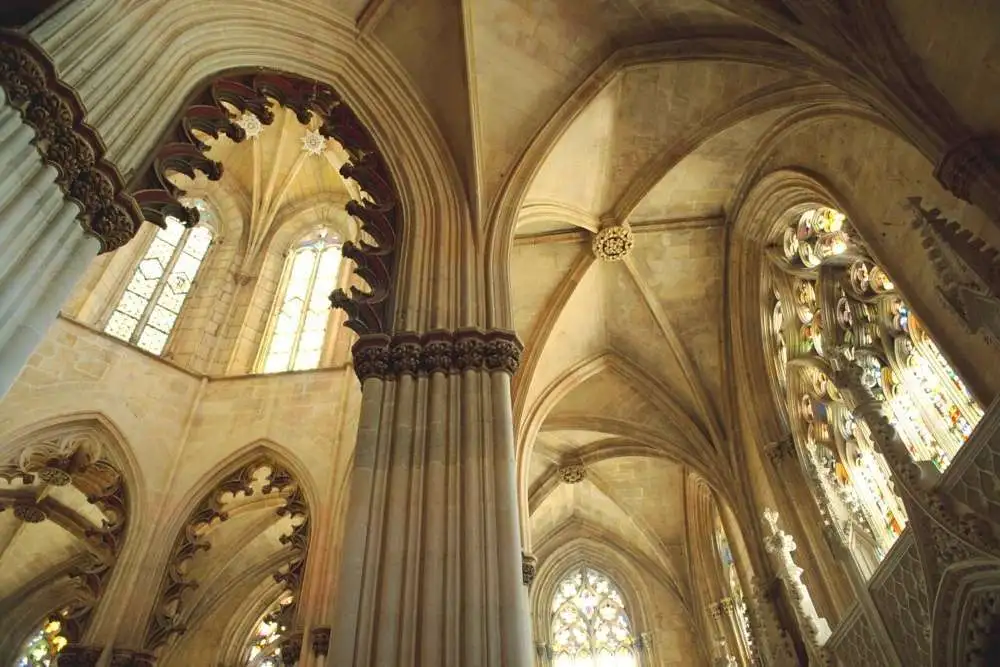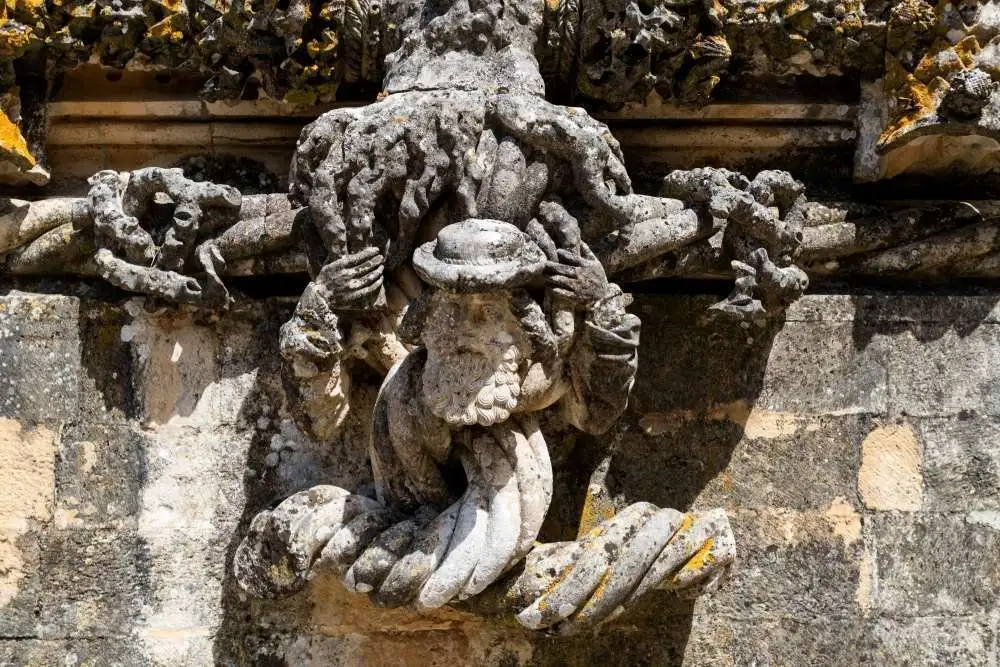- Home
- Lisbon Day Trips
- Monasteries: Tomar, Batalha, Alcobaça
- Hotel Pickup
- Guide
- Private
Discover Tomar, Batalha and Alcobaça on a private tour from Lisbon with an official guide.
Enjoy a guided visit inside the most emblematic monasteries in Portugal.
Be seduced by the mysteries of the Knights Templar at the Convent of Christ, in Tomar.
Find a stunning Portuguese Gothic style at the Monastery of Batalha, and visit a masterpiece of Cistercian Gothic art, the Monastery of Alcobaça.
Book
Schedule
| Daily | 8.30 AM - 5.30 PM |
Price
per person| 2 people | 165€ |
| 3 people | 120€ |
| 4 people | 100€ |
| 5 people | 90€ |
| 6-7 people | 85€ |
| Tickets (extra) | 22.5€ or 45€ |
- Tickets to Monasteries
(if option selected) - Guide inside Tomar + Batalha + Alcobaça Monasteries
- English-Speaking Official Guide
- Air-conditioned vehicle
- Bottled Water
- Wi-fi
- Lunch
Tomar, Batalha and Alcobaça Tour Itinerary
Hotel pick upMonastery of Alcobaça
Monastery of Batalha
Lunch (free time - own expense)
Convent of Christ (Tomar)
Hotel drop off


Tomar, Batalha and Alcobaça
Tour from Lisbon
Tour from Lisbon
Meet your guide at your hotel in Lisbon, where you will be picked up to begin your private tour to three world heritage monasteries in Portugal. At this unique itinerary, you will enjoy guided visits inside the Convent of Christ (Tomar), the Monastery of Batalha and the Monastery of Alcobaça.
While heading north (1:30hr trip), immerse yourself in the world of the Cister Monks. Once you get to Alcobaça, you will visit the monastery, founded in the 12th century, with your guide. For its size, purity of architectural style, beauty of materials and the care with which it was built, this masterpiece of Cistercian Gothic art was listed as World Heritage in 1989.
You will then continue to Batalha town and visit the 14th-century Monastery of Batalha, listed by UNESCO as World Heritage in 1983, before stopping 1 hour for lunch. There, a highly original, national Gothic style evolved, profoundly influenced by Manueline art.
Later, you will be guided in the Convent of Christ, at Tomar, founded by the Templar Knights at the 12th century and UNESCO World Heritage site since 1983.
Your tour to the World Heritage portuguese monasteries will end with a return to your hotel in Lisbon.
Convent of Christ at Tomar
Monasteries Tour
Monasteries Tour
The Convent of Christ is the largest monumental area in Portugal
Architectural compound located in the city of Tomar, Portugal, that includes diverse buildings, standing out the Templar round church, the Renaissance cloister and the Manueline window. The largest monumental area in Portugal, with more than 54 000m2 (around 581 251ft²), it's classified as a UNESCO World Heritage Site since 1983.
The construction of the Tomar Convent took centuries
Built by some of the most important architects working in Portugal, the construction took centuries and it's linked to the early days of the kingdom of Portugal and the role of the Templar Order, the legendary knights that defended faith with sword. Founded in 1118, in Palestine, the Templars were the first military order in history.
The castle and the round church are memories of the Templars
The Convent of Christ still retains memories of those knight-monks. Unique landmark of their presence in the Iberian Peninsula, the templar castle is a vanguard work of medieval military architecture. The architecture of the famous round church, with an octagonal centered plan, is inspired by the temples of Jerusalem.
The Order of Christ is the Portuguese Templars
Forty five years after the extinction of the Order of the Templars (as a result of its persecution by the French king Philip IV, the Fair) the castle became the headquarter of the Order of Christ, created in its place, in Portugal.
Knights became navigators in Portugal
In 1420, Henry the Navigator was appointed governor of the Order of Christ. The order was reconfigured, without distorting its original cavalry and crusade spirit, but moving towards a new objective, the maritime expansion, which the Order itself financed. Knights became navigators and many navigators became knights of the Order of Christ. And this is why the caravels bore the Cross of the Order of Christ on their sails.
Manueline style was introduced in the Convent of Christ
With King Manuel I (1495 and 1521), holder of immense power spread all over the world, the convent hosted important works of expansion and improvement. A new decorative language, the Manueline style, was introduced, celebrating the Portuguese maritime discoveries, the mystique of the Order of Christ and the Crown in a great manifestation of power and faith. The Window of the Chapter Room, enigmatic and deeply symbolic, is its greatest example.
Monastery of Batalha
Monasteries Tour from Lisbon
Monasteries Tour from Lisbon
The Batalha Monastery is a masterpiece of Portuguese Gothic
World Heritage since 1983, the Holy Mary of Victory Monastery, better known as Batalha Monastery, it's a masterpiece of the Portuguese Gothic. Built over two centuries (1386 to 1563), during the reign of seven kings, took a large team of high level masons, both domestic and foreign. It was here the Manueline style took its first steps.
Batalha Monastery is symbol of royal power and autonomy of Portugal
Located in the village of Batalha, the imposing Dominican monastery stands out for its monumentality and the exterior lacy stone. It was a project to legitimize a new dynasty, the Avis dynasty, hence the dimension of the work, sign of royal power and autonomy of the kingdom.
Ordered to build in 1386, by king João I, it was a thanks to the Virgin Mary for the victory against the Castilian in the Battle of Aljubarrota. Decisive event for the consolidation of the Portuguese nation, the battle took place at August 14, 1385, eve of the Assumption of the Virgin Day.
The victory put an end to a dynastic crisis that started in 1383, when king Fernando died, whose only daughter was married to the king of Castile, a pretender to the throne of Portugal.
The Batalha Monastery includes a church, 2 cloisters and 2 royal pantheons
During its history, three dramatic events affected deeply the monastery - the 1755 Great Earthquake, the Third French Invasion (1810) and the extinction of religious orders in Portugal (1834). Currently, the complex includes not only a church, but two cloisters (both with attached rooms) and two royal pantheons - the Founder's Chapel and the Unfinished Chapels.
Monastery of Alcobaça
Monasteries Tour from Lisbon
Monasteries Tour from Lisbon
The Monastery of Alcobaça is the first Gothic work built up in Portugal
Classified as a World Heritage Site by UNESCO in 1989, the Abbey of Holy Mary of Alcobaça, main house of the Cistercian Order in Portugal, it's the first fully Gothic work built up in Portugal. Taking as inspiration the Abbey of Clairvaux (in France), their headquarters, the Alcobaça Monastery stands out for its purity of architectural style and size, thanks to a continued policy of royal protection.
The land of Alcobaça was donated to St. Bernard by the first king of Portugal
It all started with a donation of the lands of Alcobaça to Bernard of Clairvaux (later St. Bernard) and the Cistercian Order by the first king of Portugal, Afonso Henriques. Construction began in 1178 (inhabited from 1222) and was built in a Primitive Gothic style.
It was the main house of the Cistercian Order in Portugal
The church architecture was the mirror of the Benedictine rule in the pursuit of modesty, isolation from the world and service to God. The Cistercian religious, known as white monks, lived off their work and did not accumulate wealth. The first monks in Alcobaça had a notable civilizing action of assistance and charity through the pharmacy and of bread and alms distribution at the entrance.
The monastery houses the tombs of king Pedro and Inês de Castro
The monastery also houses the tombs of king Pedro I (1320-1367) and Inês de Castro (1320-1355), the greatest love story in the History of Portugal. Dating from the 14th century, and considered masterpieces of European tomb sculpture, the tombs of the two lovers give a great significance and splendor to the church, feet with feet, so they can meet again at Resurrection Day.
Last Reviews
Great tour to the monasteries of Alcobaca, Batalha and Tomar
"I can’t say enough good things about this amazing tour with No Map Tours! We had a wonderful day at Alcobaca, Batalha and Tomar with our expert guide, Sandra. From the time we met at the hotel in Lisbon until the time the tour was done, she gave us information about the historical context, architecture and role of each of the monasteries in the kingdom of Portugal. The sites are must-see architecture masterpieces. It's difficult to pick a favorite, but the Gothic style of the Batalha monastery and the history of the Knights Templar in Tomar stand out. Excellent and highly recommended."
Henry P. (Brisbane, Australia)
Best way to visit 3 UNESCO monasteries in a day trip from Lisbon
"We had an outstanding full day private tour to 3 world heritage monasteries of Portugal. Our tour guide Sandra was phenomenal! We loved her vast knowledge of the history of each monastery. She told us all kinds of fascinating details room by room of all the monasteries and answered all of our questions. We enjoyed immensely the rich history of the knights templar at the convent of Tomar and its architecture. And we loved hearing the tragic love story of King Peter and Ines in Alcobaca, while admiring their tombs. I recommend this day trip for anyone who would like a more in-depth understanding of the monasteries of Tomar, Alcobaca and Batalha."
Amanda O. (Phoenix – AZ, United States)
Alcobaca Monastery, Batalha Monastery and Convent of Christ tour recommended
"Exceptional experience enhanced by a top-notch guide to 3 fabulous places. Our guide had so much detailed knowledge about every monastery we visited. Her wider understanding of Portuguese history is equally impressive. She made the whole trip fabulous. The Convent of Christ in Tomar is an amazing place and the memory of the round Templar church will last a lifetime. Also, as an English descendant, the story of Batalha Monastery touched my heart. I didn't know that the oldest alliance in the world is between England and Portugal. The tour and overall experience far exceeded our expectations. I highly recommend visiting this monasteries and No Map Tours!"
Samantha L. (Halifax, Canada)
Amazing time at Alcobaca, Batalha and Tomar Monasteries
"What an amazing tour! Sandra is the best! We were hooked on all the stories shared, especially about the illegitimate son who became king of Portugal. We learned so much history. Sandra was a very entertaining guide, she timed everything perfectly, it was an incredible experience. And the monasteries are all magnificent, all so different from each other. But Batalha Monastery was my fave. Thank you Sandra!"
Martha (Boston – MA, US)
Great way to see 3 Unesco world heritage monasteries from Lisbon
"We had an unforgettable experience on this tour. Very informative and entertaining, got to learn a lot of history. Our guide was knowledgeable and entertaining. The Templar church, in the convent of Tomar, is really something special. We had such high expectations and it didn't disappoint... wow! Highly recommended tour."
Lisa (Hudson Bay, Canada)
Alcobaca, Batalha & Convent of Christ. Brilliant. Loads of history
"First class day, the tour guide Sandra was brilliant! We started the tour off on the right foot at Alcobaca. Simple but not simplistic gothic style. Afterwards, we headed to the Batalha Monastery, where we saw the opposite, a very intricate and extravagant flamboyant Gothic. And finally, the Convent of Christ in Tomar, a complex that includes the Templar castle, the Manueline style (so Portuguese and so unique), Renaissance… After taking this tour, we really understand why all this monasteries are world heritage sites. Sandra was a very experienced tour guide/historian all rolled into one, full of information and so interesting to listen to. We have taken several tours in different countries, and this one was by far the best and most informative. Thanks for a fantastic day!"
Chris (Peterborough, UK)
Perfect Cultural Day
"You get to visit three amazing monasteries in just one day, in a wonderful tour with a great guide. I searched for ways to tour all sites on my own but getting to do all three in one day with guide was my best decision ever. Totally worth it."
Allison (London, UK)
Great day trip from Lisbon
"A great way to see many different locations in one day. Awsome tour with lots of information about all three stops. Batalha was incredible. The trip was an amazing experience."
Gordon (San Diego, US)
Amazing historical day tour
"I would definitively recommend this tour to anyone who visits Lisbon. Our friendly guide shared a lot of information and history. Tomar was my favorite monastery to visit since I am into ancient Templars history."
Jason (Charlestone, US)
Our LISBON TOP TOURS
Check out the BEST day trips from Lisbon, Portugal!
Popular TRANSFERS from/to LISBON
Frequently Asked Questions about Tomar, Batalha, Alcobaça Tour
How many people will be on the Monasteries Tour from Lisbon?
Tomar, Batalha and Alcobaça Tour from Lisbon is a private tour. Just you and your party, up to 7 people, plus the guide.
Which admission tickets are included on the Tomar, Batalha, Alcobaça Tour?
The Monasteries Tour from Lisbon includes admission tickets (if option selected) and guide to:- Convent of Christ (Tomar)
- Monastery of Batalha
- Monastery of Alcobaça
What is the Monasteries Tour from Lisbon cancellation policy?
Tomar, Batalha, Alcobaça Tour cancellation policy: Full refund for cancellations up to 24 hours prior to your tour departure.
